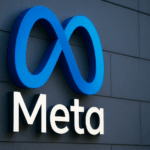Fintiv, a provider of digital payment solutions, has leveled serious accusations against Apple (NASDAQ:AAPL) Inc., claiming that the tech giant engaged in racketeering and theft of trade secrets to develop its Apple Pay technology. This lawsuit, filed in a federal court, suggests that Apple’s alleged misconduct stretches back over a decade, signaling ongoing tensions in the tech industry’s competitive landscape. The lawsuit seeks to draw attention to purported unethical practices in securing technology advancements. The focal point of this legal challenge is the critical technology behind the widely-used Apple Pay platform.
Fintiv’s recent legal action is not unprecedented, with past claims addressing similar issues against Apple. Previous disputes have failed to resolve amicably, with tech patents and proprietary technologies often sitting at the core of contentions. Apple’s prior actions dealt with similar charges from other companies, presenting a history of controversies relating to allegations of unfair technology acquisitions. These episodes indicate a complex web of legal battles surrounding Apple’s strategies involving technological partnerships and integrations.
What Are the Specific Allegations?
According to Fintiv’s complaint, in 2011 and 2012, Apple reportedly presented itself as a potential partner to gain confidential insights into CorFire’s, now Fintiv’s, mobile-wallet platform. The lawsuit outlines that Apple used non-disclosure agreements (NDAs) ostensibly to protect this information but later employed the insights for its gain. The complaint asserts that Apple’s implementation of secure elements, NFC, and service management layers in Apple Pay are near reproductions of Fintiv’s proprietary systems.
How Does Apple’s Alleged Approach Affect the Industry?
The accusations suggest that Apple created a partnership network with banks and card networks to facilitate Apple Pay transactions without sharing the benefits with Fintiv. This methodology purportedly involves financial movements measured in trillions, further compounding the severity of these allegations. Exploring allegations beyond Fintiv, the suit references Apple’s prior disputes with Masimo and Valencell over trade secrets, pointing to a possible pattern in Apple’s dealings. Apple has consistently chosen to refrain from commenting on litigation matters.
Fintiv’s complaint specifically details an alleged ‘partner, poach and profit’ strategy, supposedly adopted by Apple in other technological sectors. The narrative extended to previous incidents involving Masimo’s non-invasive monitoring technology and Valencell’s heart-monitoring credentials suggests a recurring strategy of knowledge acquisition under the guise of partnership. Apple’s choice to sidestep licensing agreements allegedly points to behavioral patterns of misappropriation.
“Apple’s theft of Fintiv’s technology is part of a pattern and practice … all in order to steal the company’s valuable intellectual property and use it to commercialize the business on its own,” a portion of the lawsuit reads. Such statements intensify the lawsuit’s implications, rendering it a critical matter for scrutiny. Apple’s attempt to integrate Valencell’s technology allegedly followed similar lines, where collaborative promises masked intentions to acquire and monetize confidential information.
“which had developed non-invasive technology related to blood oxygen monitoring which Apple believed was key to overcoming performance issues with its Apple watch,” Fintiv’s filing stated. The parallels in approach, as claimed against Valencell, emphasize extensive allegations by Fintiv. Apple’s shares, however, witnessed a marginal increase, showcasing investor confidence despite ongoing issues. This move reportedly underscores the complexity of litigation weighed against market trust.
Fintiv’s allegations underscore broader concerns over intellectual property rights and enterprise integrity within the tech industry. As the narrative unfolds, stakeholders across the payments industry remain observant of potential impacts on Apple’s partnerships with financial institutions. Analyzing precedent from cases like those against Masimo and Valencell, this situation might yield further discussions on corporate conduct in technology deployment. Those in the field might find it insightful to consider Fintiv’s allegations in their ongoing and future strategic alliances.










